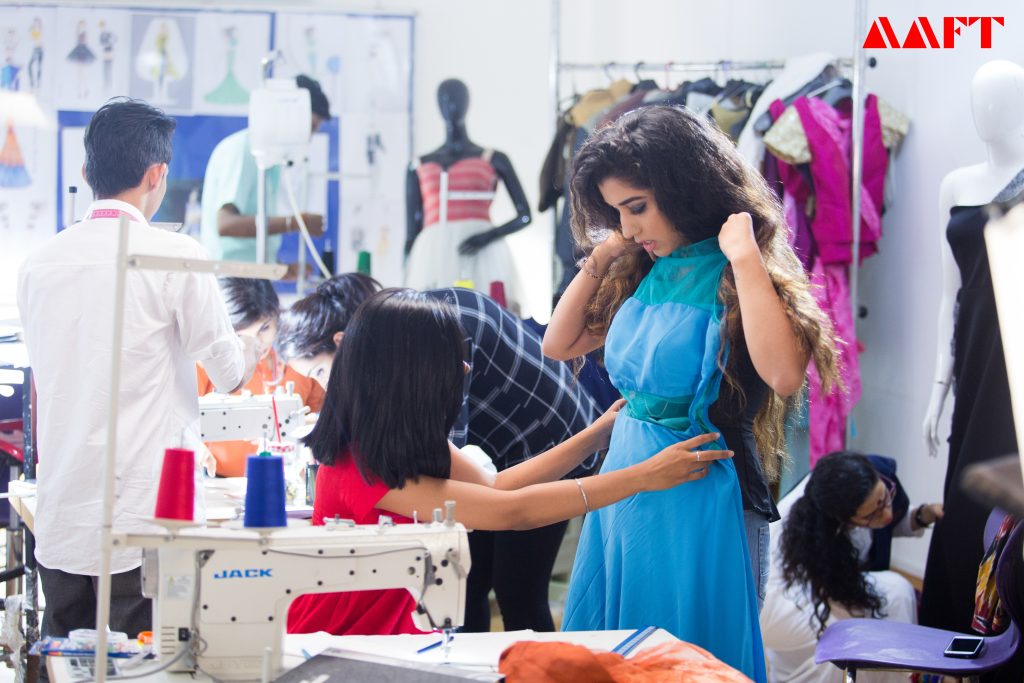How to Become a Fashion Designer: Tips, Education, and Career Path
Fashion design is a field that is constantly changing. So, how do you become a fashion designer with a lucrative career? Start with working on your skills. Understand what skills you will need to succeed as a designer and work on developing those. Formal training, industry exposure, networking, and a continuous drive to learn and stay updated on the changes will ensure a successful career in design.
This article will take you through the steps in pursuing a fashion design career. It will discuss popular courses in detail and highlight the importance of practical training and networking.
How to Become a Fashion Designer?
You need to read all that you can find on ‘how to become a fashion designer’. We have shortlisted some steps to help you figure out your journey.
- Work on your Creative Drive
Creativity is the first step to a successful design career. You will need to think outside the box and come up with creative solutions to design problems.
Do you want free career counseling?
Ignite Your Ambitions- Seize the Opportunity for a Free Career Counseling Session.
- 30+ Years in Education
- 250+ Faculties
- 30K+ Alumni Network
- 10th in World Ranking
- 1000+ Celebrity
- 120+ Countries Students Enrolled
Read Also: Fashion Design vs. Fashion Communication: Which Career Path is Right for You
Look at what is happening in the fashion scenario globally. And experiment with your designs. Exploration in terms of designs and materials will develop your understanding of the craft and help you get ahead of the curve.
Focusing on developing your creativity will also keep you motivated and allow you to create novel designs that are functional, affordable, and appealing.
Book Now →
- Develop a Strong Foundation
A strong foundation goes a long way in creating a rewarding career. You can teach yourself some of the fundamental skills that will come in handy when you join a course.
- Learn the basics of Fashion Illustrations – Although courses will cover this part, understanding fashion croquis and their proportions can give a kickstart to your learning process. You can also take a step further and see if you can develop stylized illustrations.
- Understand basic technical terms – You don’t need to be an expert in all the terminologies right away. Start small and work on building your fashion vocabulary.
- Learn some Fundamentals of Fashion – you can teach yourself the elements and principles of design and the color theory for starters. This could be a fun exercise where you create compositions using different elements and color schemes. This would both broaden your understanding of fashion design and help you with your Design Aptitude Tests (DATs).
- Explore the popular software – Play around with software like Photoshop and Illustrator. Your intention at this stage is not to master it, but to slowly get acquainted with the interface and the tools and know how to switch between manual and digital mediums.
These skills will be useful when appearing in entrance tests for your chosen design degrees. It would also help you learn advanced skills once you enter a Fashion Design School.
- Join a Fashion Design Course
To enroll in a professional course, you will need to complete your schooling with a minimum of 50% aggregate score with any subject combination.
Do you want free career counseling?
Ignite Your Ambitions- Seize the Opportunity for a Free Career Counseling Session.If you are looking for a postgraduate degree/diploma, you will need a graduation (10+2+3) with a minimum 50% aggregate score.
NIFT, NID, and AAFT conduct their respective DATs and Personal Interviews.
B.Des (4 years)/B.Sc. (3 years) in Fashion Design are UG-level degree courses that focus on creating a foundation. They would help you familiarize yourself with various theoretical knowledge and practical skills. This includes studying fashion trends, pattern making, draping, constructing garments, and knowledge of software.
M.Des/M.Sc. (2 Years) is an advanced study of fashion design. It would help you understand the business of fashion, learn advanced skills, and work with highly professional tools. It also focuses on Design research and specialized niches within the discipline.
Diploma and Certificate courses are aimed more towards skill development and mastering software used in the industry. Lasting between 3 weeks to 2 years, these have varying degrees of advanced learning.
- Get Practical Experiences
Practical experiences including industry exposure will help you better understand how to become a fashion designer and allow you to map a route for yourself. You can volunteer to assist in Pop-Up shows and Exhibitions or participate in Classroom projects.
Read Also: Why Pursue a Career in Fashion Communication?
If you have enrolled in a professional course, the curriculum will probably include internships. However, you can apply for internships outside of the curriculum-based ones as well. Send out emails to brands and designers and write cover letters.
All the industry exposure will add to your experience and help you navigate the industry better. It would also add value to your resume and allow you to aim for better roles in the future.
- Use Online Resources to Upskill
Design education is not limited to offline courses anymore and fashion design has become quite multi-disciplinary in recent years. You can now access tutorials and certificate courses online and pursue them alongside your degree course or internship.
You can, for instance, master a specific software, or learn a skill in-depth. You could also venture into related fields that can come in handy later in your career.
Certificate courses in Digital Marketing, Fashion Retailing, Graphic Design, Photography, Forecasting, etc can be helpful for someone pursuing a career in fashion Design.
- Create a strong Portfolio
Are you wondering how to become a fashion designer with an impactful portfolio? Make sure they provide a slice of your work, style, and aesthetic. Create a layout that reflects your aesthetic. Don’t forget to include high-quality photos.
- Include different projects. This would highlight your versatility.
- Limit the number of projects by only including the best ones.
- Make sure you show the design process – including sketches, mood boards, ideations, and fabric swatches.
- Network
Networking will help you understand the industry better. You can get insights and learn how it functions. It’s also a great way to build professional relationships. You can find mentors via your network, or land an internship. This is a great way to seek feedback and reach out to recruiters as well.
- Use platforms like LinkedIn or join online groups and forums.
- Get in touch with alumni groups of your institute.
- Attend exhibitions and fashion shows. Connect with the professionals you meet at these events.
- Develop a Personal Brand
Think about what makes your work unique. Your goal is to create designs that are functional and aesthetic at the same time. Define your brand values. Be sure of what your designs represent.
Read Also: Fashion Designer Salary in India in 2024: A Brief Understanding
Build your website. You can use creative layouts. Make sure the website reinforces your design aesthetic and values. You can curate your social media pages accordingly too. Be consistent with the elements and the layout across platforms.
- Blend Creativity and Feasibility to Create a Unique Style
But, how do you become a fashion designer who can perfectly blend creativity with functionality?
- Understand your target market.
- Do a lot of research before you start with the design process.
- Brainstorm as much as you can and carefully assess all of these. Then, choose the one that best solves your design problem.
- Use 3D illustrations to see how it would look when worn.
- Utilize your digital pattern-making skills to see if the designs are feasible.
- Apply For Fashion Design Jobs
Once you have completed your design degree, you can start applying for various job roles.
- Participate in the campus interviews during your institute’s placement week.
- Find out about vacancies through LinkedIn or ads on the official websites of design houses.
- You can send cold emails to recruiters.
- Write cover letters to the companies or designers that you want to work with.
- Create a strong Resume that reflects all your skills and highlights your experiences.
How to Deal With Setbacks When Building a Career in Fashion Design?
- Take breaks from your busy schedule and engage in hobbies.
- Talk to a professional if it’s too overwhelming.
- Ask for feedback from your peers and mentors, and use it to improve your work.
- Diversify your knowledge and skills.
- Balance your work and regular life for a more productive and successful career.
Read Also: Top 10 Essential Tech Skills for Fashion Designers

Conclusion
As you learn more about how to become a fashion designer in today’s competitive environment, note down the points you feel like you need to work on. Develop some basic technical and digital skills before you join a formal course. You can also shortlist some of the institutes that you want to check out. Compare and contrast the courses before you make a final decision.
AAFT’s School of Fashion Design offers an array of degree, diploma, and certificate courses that you can choose from. Varying in their duration and specialization, these let you access all the resources that you need under the guidance of expert facilitators. You can start your dream fashion design journey with state-of-the-art infrastructure and a well-structured curriculum that meets industry standards.

AAFT has been providing the world with limitless creativity and expression since 1993! Through a dynamic and industry-driven curriculum, AAFT provides engaging and captivating articles to persuasive blogs and empowers its readers to explore diverse avenues of creative media education-related content.











